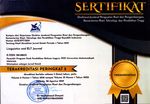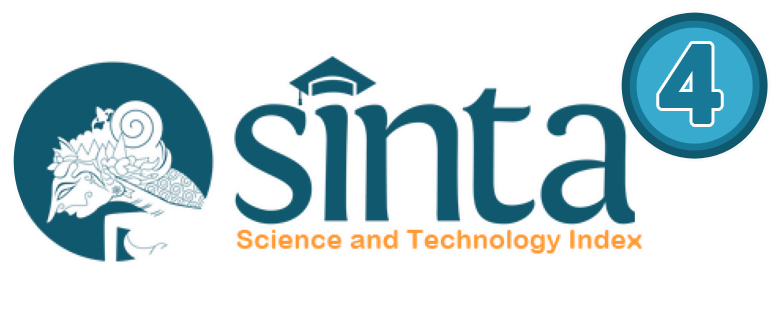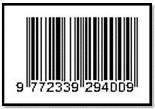The Comparasion Between Science Classes and Social Classes Students in Translating Reading Passages
Abstract
Keywords
Full Text:
PDFReferences
Arikunto, S. 2013. Prosedur Penelitian Sebuah Pendekatan Praktik. Jakarta: PT. Bina Aksara
Best Jhon. 1999 cited in Nurfaizal (2008). The Comparasion between Achievement of Natural Science and Social Science Classes Students in Translating Reading Passages. Mataram. UM.Mataram.
Brown, H. Douglas.2000. Teaching By Principle (an interative approach to language pedagogy). Second edition, San Franciscoo, California.
Dudley-Evans, T. and St John, M. (1997). Developments in ESP: A multi disciplinary approach. Cambridge: Cambridge University Press.
Depdiknas, 2013. Landasan Filosofis Teoritis Pendidikan Bahasa Inggris. Jakarta: Depdikbud.
Emilia. 2012. Menulis Tesis dan Disertasi. Bandung: Alfabeta
Gufran, 1995. Kamus Lengkap Inggris-Indonesia, Indonesia-Inggris. Surabaya: Terbit Terang.
Harmer. 2008. How to Teach Reading. An introduction to the Practice of English Language Teaching. Malaysia: Logman.
Hatim and Munday, 2004. The Translator As Communicator. London: Routledge.
Hatim, 2001. Teaching and Researching Translation. London: Routledge.
Ika Lestari Handayani. 2010. The Correlation between Students’ Achievement in Reading Comprehension in English and Arabic. Mataram. UM. Mataram.
International Teacher Training Organization. EFL Teaching Terminology and Glossary.17 Nov.2005.http://www.teflcertificatecourses.com/tefl-articles/eflteachingterminology.html (15 Feb 2014).
Jeremy, Munday. 2001. Introducing Translation Studies. Theories and applications. London and new york.
Khan Mohammad, Hajar & Osanloo Maryam. Moving toward Objective Scoring: A Rubric for Translation Assessment. JELS, Vol. 1, No. 1, Fall 2009, 131-153 IAUCTB
Munday, Jeremy. 2001. Introducing Translation Studies. Theories and applications. London and New York.
Newmark, Peter. 2001. A Textbook of Translation. Education Limited.
Nurfaizal. 2008. The Comparison Between the Achievement of Natural Science and Social Science Classes Students in Translating Reading Passages. Mataram. UM Mataram
Patel Dr.M.F. and Jain M. P. 2008. English Language Teaching (Methods,Tools and Techniques) Jaipur: SURNISE PUBLISHERS and DISTRIBUTORS. Reading Comprehension: A Case for Translation. California Linguistic Notes, Volume 34, 2, 1-33. http://www.academia.edu/2874449/Vocabulary_learning_and_L2_reading_comprehension_A_case_for_translation.
Sugiyono. 2013. Metode Penelitian Pendidikan, Kuantitatif dan Kualitatif. Bandung: Alfabeta.
Spargo, Et al. 1980. Timed Reading. Providence: Jamestown Publisher.
DOI: https://doi.org/10.31764/leltj.v9i2.7739
Refbacks
- There are currently no refbacks.
Copyright (c) 2022 Linguistics and English Language Teaching Journal

This work is licensed under a Creative Commons Attribution-ShareAlike 4.0 International License.
_____________________________________________________
Linguistics and ELT Journal
p-ISSN 2339-2940 | e-ISSN 2614-8633

LELTJ is licensed under a Creative Commons Attribution-ShareAlike 4.0 International License.
_____________________________________________________
LELTJ is abstracting & indexing in the following databases:
_____________________________________________________
LELTJ Editorial Office:













